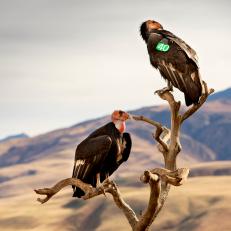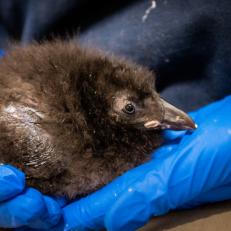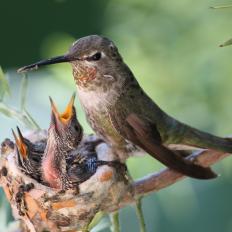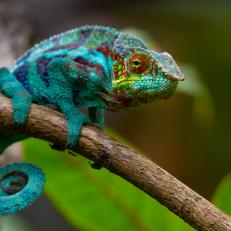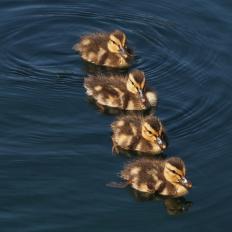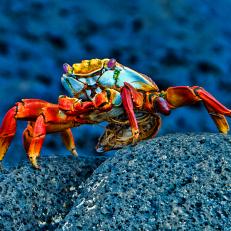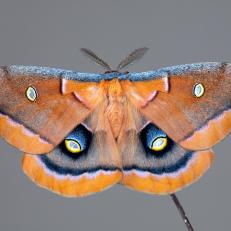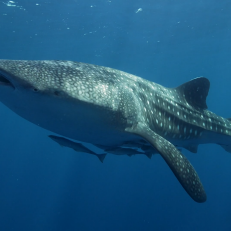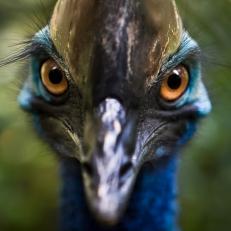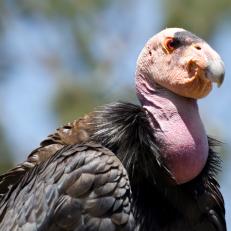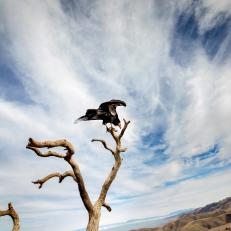Great Bird Migrations Take Flight
Fall means that more than 4 billion birds will stream overhead on their fall migration to warmer grounds down south, where they will feed and mate. Explore nature photographer Ian Shive's favorite places to see this migration in action is in New Mexico and Texas.

By:
Ian Shive
Show:
Nature in Focus
Related To:
lessRelated To:
View The Gallery
1 / 16
Sunset in Bosque del Apache National Wildlife Refuge, New Mexico. Most of the birds in the distance are migrating snow goose, which sleep on the water at night for protection from predators.
"Bosque" is what we call it for short, and the Bosque has much more than snow geese and sandhill cranes stopping through on their fall migration, as seen in this photo of a beautiful northern shoveler.
Bosque has more than just birds, too! Look at the size of this skunk! At first I wondered if it was a small bear.
Sandhill cranes stand about 3-4 feet tall and have a "sandy" color to them. You can see the size difference compared to the water fowl mixed in. You can also see whooping cranes here in Bosque, not just in Aransas. Birds can be separated from groups, get blown off course, or just go their own way. That's half the fun of spotting different migrating species in the National Wildlife Refuges they visit.
Not all species will land exclusively in a refuge, though the refuge is setup to ensure optimal conditions for feeding and mating of migrating species. It is very common, however, to see sandhill cranes in farm fields and backyards, too, so keep your eyes open! They've come a long way to be here.
Snow geese are some of my favorite birds. They are beautiful to photograph, fun to watch, and their large congregations make for dramatic imagery.
A snow goose prepares to take off in Bosque del Apache National Wildlife Refuge.
A native Texas Whooping Crane searches for food in Aransas National Wildlife Refuge, Texas. Whooping Cranes enjoy eating seafood like blue crabs, clams, and fish which is plentiful along the Gulf Coast. These cranes travel over 2,5000 miles each year to winter in Texas on the 115,000 acre refuge.
A family of native Texas Whooping Cranes are in search of food in Aransas National Wildlife Refuge, Texas. The juvenile crane is easily distinguishable from its' parents because of its smaller size and reddish coloring. The cranes enjoy seafood like blue crabs, clams, and fish that is provided by the gulf coast.
Not all birds migrate, but they will prepare for winter by taking advantage of seasonal opportunities, such as acorns on oak trees, such as this scrub jay in central California.
I spent days and days trying to get close-up shots of the different species of woodpeckers that live in my yard, but they are much more difficult than the other birds. Note their bright red head! They also prepare for leaner months by storing acorns in holes they drill into trees.
Still far away, but with some half-decent light to catch their huge eyes and red hat. The woodpeckers call can often sound like they are laughing...and probably are if they are looking at my attempts to get photos of them.
Western Bluebirds also don't migrate, but they may move from higher elevations to lower elevations, and vice versa, as the seasons change, taking advantage of the climate and food opportunities.
Two western bluebirds that I commonly see in the same area feeding, giving me opportunities to make really fun images.
My camouflage photo blind, which allows me to get photos of birds and other wildlife without giving away my location and scaring them off.
A captive Snowy Owl in winter quarters at the Raptor Center, Great Swamp National Wildlife Refuge, New Jersey. They, too, migrate. No matter where you are in North America, there are different opportunities to see different species.









